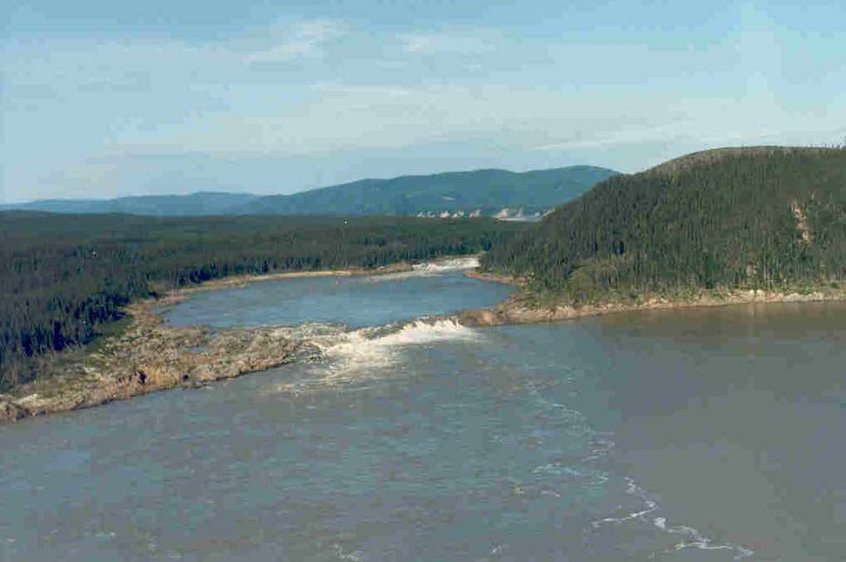More than 90% of Canada’s 22 planned new hydroelectric projects in its northern region are likely to increase concentrations of a dangerous and debilitating neurotoxin in food chains relied upon by indigenous communities, a Harvard University study has found.
Without concerted mitigation efforts, such as scraping off the topsoil layer of flooded areas, people eating local fish and wildlife will experience a “drastic” increase in exposure to a poison that causes irreversible cerebral-palsy-like effects, researchers say.
The team found that when an area is flooded for a hydro project the average exposure to the toxin, called methylmercury, will double on average.
Methylmercury damages the central nervous system causing symptoms similar to those of cerebral palsy, including blindness, coordination problems and impaired mental functioning. Pregnant women and children are especially at risk, and the effects of methylmercury poisoning are irreversible.
“For [a] population that relies heavily on locally caught food, the increase in exposure is drastic,” said researcher Ryan Calder.
“We see substantial fractions of this population whose pre-flooding methylmercury exposure is at or below regulatory thresholds and post-flooding are pushed way above them without mitigation measures.”
Flooding intensifies the process whereby microbes convert naturally occurring mercury in soil into potent methylmercury, which enters the water and animals, magnifying as it moves up the food chain.

The Churchill River at Muskrat Falls, Labrador, Canada (Government of Newfoundland and Labrador)
This makes the toxin especially dangerous for indigenous communities living near hydroelectric projects because they tend to have diets rich in local fish, birds and marine mammals such as seals.
Contaminating the food chain
Since 2012 the Harvard team has studied three Inuit communities downstream from the proposed Muskrat Falls hydroelectric facility in Labrador, which will require the flooding of land around the Churchill River, upstream from an estuarine fjord called Lake Melville.
On the ground, the team measured how different forms of mercury cycle through this ecosystem, and formalised a mathematical model to forecast post-flooding methylmercury levels in Churchill River and Lake Melville.
They used unique chemical tracers to find out where individual animals, such as salmon or trout, picked up their methylmercury in order to project levels of the toxin in different species of fish and wildlife.
Finally, the team studied the diets and baseline methylmercury exposures of more than 1,000 Inuit who live on Lake Melville’s shore to understand how changes in their food would affect individual exposures.
“After collecting all of this information, we can rapidly see how all these people’s exposures will change with the increased methylmercury levels in local wildlife and who will be most affected in this population,” said Ryan Calder, first author of team’s paper, now published in Environmental Science & Technology.
The team found that while there were large differences in exposure to methylmercury across the population, on average exposure to the toxin will double after the upstream area is flooded.
While some people were found to be below the US Environmental Protection Agency’s reference dose for methylmercury, any increase in exposure is associated with increased risks of poisoning.
The people at the highest risk are those who eat locally caught wildlife nearly every day, especially river fish, where the increase of methylmercury is expected to be highest.

Nain, or Nunajnguk, is the northernmost permanent settlement in the Canadian province of Newfoundland and Labrador, with a mostly Inuit and mixed Inuit-European population (Chaughten/Creative Commons)
“What our study allows is time to consider mitigation measures that will reduce these potential exposures for the most vulnerable people,” said Calder.
What now?
The team applied the prospective framework to the 22 other proposed hydroelectric sites in Canada, using publicly available, site-specific data. They found that in excess of 90% of them would see an increase in methylmercury, and that 11 sites had equal or greater methylmercury concentrations relative to Muskrat Falls.
“The human and ecological impacts associated with increased methylmercury exposures from flooding for hydroelectric projects have only been understood retrospectively, after the damage is done,” said Elsie Sunderland, professor of environmental science and engineering at the Harvard John A. Paulson School of Engineering and Applied Sciences.
“Our research suggests that low impact hydroelectric projects are possible with careful site selection. Mitigation measures such as removing topsoil that provides the substrate for methylation in these ecosystems may need to be considered in areas where forecasted exposures are high.”
She added: “This research opens the door to anticipating environmental impacts before the damage is done and moving forward with green energy alternatives in manner that does not impose an unfair burden on nearby indigenous communities.”
The research was supported by the US National Science Foundation, Canada’s Northern Contaminants Program, ArcticNet Inc., Tides Canada’s Oak Arctic Marine Fund Program, the Nunatsiavut Government and the Natural Sciences and Engineering Research Council of Canada.
- Visit the Harvard University website for more information.
Top image: Pregnant women and children are especially at risk from methylmercury poisoning (National Aboriginal Health Organization)
Comments
Comments are closed.







Logically the very same thing applies naturally to how many existing thousands of rivers and lakes across all of the huge land of Canada and likewise to the criminal dumping of how many tons of mercury into our oceans and even the mercury fillings in our very own teeth! However the removal of top soil with that of the existing trees and vegetation in the entire area to be flooded by a future dam – come hydro-electric scheme: if it can become a viable venture and be made to create jobs for locals at the same time – is an excellent idea and even more so because the mercury poison risk will then be appreciably reduced! In addition the powdered volcanic mineral known as Zeolite taken daily in water is reportedly the known and effective antidote we have against any form of mercury poisoning! Q.E.D.!